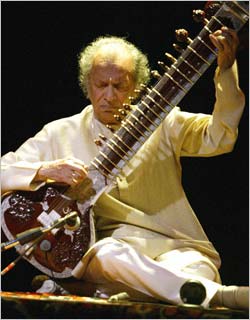skip to main |
skip to sidebar
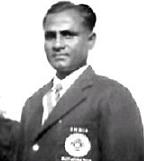 Dhyan Chand Singh was an Indian Hockey player, and considered to be the all time greatest player the game of Hockey has ever seen the world over. He has probably been the only Indian player ever in any sport which skills so high that generated a number of myths about his abilities as a Hockey player.
Dhyan Chand Singh was an Indian Hockey player, and considered to be the all time greatest player the game of Hockey has ever seen the world over. He has probably been the only Indian player ever in any sport which skills so high that generated a number of myths about his abilities as a Hockey player.
 He was born on the 29th of August 1905 at Prayag (Allahabad), Uttar Pradesh to a Bais Rajput family. His father served the Indian Army as a Subedar, and played the game of Hockey. Initially known as Dhyan Singh, he had 2 brothers named Mool Singh and Roop Singh, the latter one too being an accomplished Hockey player. Dhyan could not resume his studies after 6th standard as his family used to move from one place to another, before finally settling down permanently at Jhansi.
He was born on the 29th of August 1905 at Prayag (Allahabad), Uttar Pradesh to a Bais Rajput family. His father served the Indian Army as a Subedar, and played the game of Hockey. Initially known as Dhyan Singh, he had 2 brothers named Mool Singh and Roop Singh, the latter one too being an accomplished Hockey player. Dhyan could not resume his studies after 6th standard as his family used to move from one place to another, before finally settling down permanently at Jhansi.
Dhyan Chand had to quit studies when he was in class six due to his father`s frequent transfer in the Army job. Although he had no such interest towards any form of sports, he liked wrestling. He joined the Indian Army in the year 1922 when he was only sixteen years old. There, in the Indian Army one Subedar-Major Bale Tiwari formed the mentor of Dhyan Chand and made the strong foundation of Chand towards his perspective hockey career. Between the years from 1922 to 1926, Dhyan Chand Singh played exclusively in the regimental games and the army hockey tournaments. He finally secured a place in the Indian Army team which was scheduled to tour New Zealand. The Indian Army hockey team won eighteen matches; lost only one and drew two and thus received the praises of all the spectators. When the team returned India, Dhyan Chand immediately got a promotion and became a Lance Naik in the army.
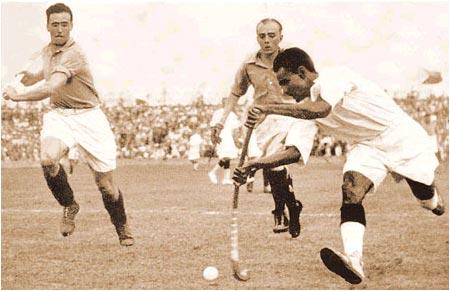
In the year 1926 Dhyan Chand was selected for the Indian Hockey team going to visit New Zealand at a tour. During the tour, the Indian team scored 20 goals in a match played at Dannkerke, and Dhyan Chand alone had scored 10 of them. India played 21 matches on the tour, out of which it won 18, lost 1 and drew 2 matches. The team scored a total number of 192 goals and Dhyan Chand alone had scored over 100 of them. After his return to India, he was promoted to the post of Lance Nayak in the Army. At the London Folkstone Festival in 1927, he scored 36 goals out of India’s total 72 goals, in 10 matches played at the event.
He played for the Indian Hockey team in the Amsterdam Olympic Games 1928, and scored 2 out of the 3 goals in the final match against Netherlands, getting India the Gold Medal by a 3-0 win. In the Los Angeles Olympics 1932, the Indian team led by Lal Shah Bukhari again won the Gold Medal. In the tournament, the Indian Hockey team defeated the USA Hockey team by 23-1, which remained a world record until it was broken in the year 2003. Out of these 23 goals, 8 were scored alone by Dhyan Chand. In the event, Dhyan Chand scored 12 goals for India in 2 matches.
In the Berlin Olympics 1932, Indian had successfully treaded their path to the finals crushing Hungary by 4-0, USA by 7-0 and Japan 9-0 without conceding a single goal in the tournament. The team defeated France in the Semi-Finals by 10 goals, and was going to combat Germany in the Finals. In the Final match, the Indian squad could score only 1 goal till the interval. Dhyan Chand removed his shoes in the interval and played the match barefooted onwards. The Indian team won the match and the Gold medal by 8-1.
Adolf Hitler, the German dictator supposedly offered Dhyan Chand a higher post in the German Army than the one he was holding in the Indian Army, but he politely denied the offer.
He kept playing till the age of 42 years, and retired from the game in the year 1948. Dhyan Chand met Don Bradman, the Cricket Maestro at Adelaide in the year 1935. After watching him play Hockey, Bradman commented “He scores goals like runs in Cricket.”
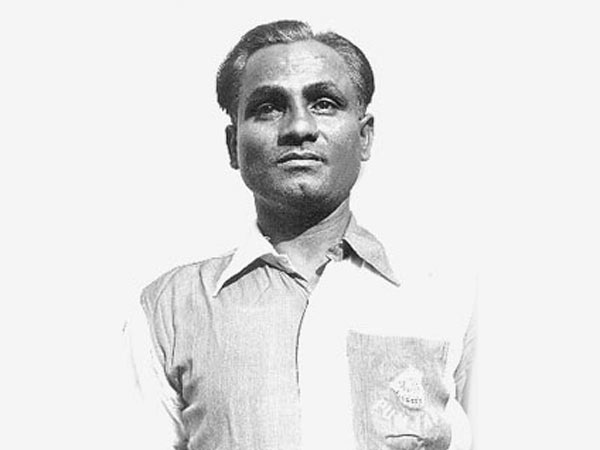
Achievements of Dhyan Chand
In 1926, Dhyan Chand Singh was included in the Indian Hockey team for the New Zealand tour. In a match at Dannkerke, the team scored twenty goals and Chand scored ten goals alone. India played twenty one matches in the New Zealand tour, and from that they won eighteen, drew two and lost only one match. A total of 192 goals were scored by the team and Dhyan Chand Singh scored more than 100 goals alone. After Chand`s return to India, he got a promotion and became Lance Nayak in the Army. In the year 1927, at the London Folkstone Festival, Chand scored a total of thirty six goals out of the total seventy two goals scored by India, in ten matches.
Dhyan Chand played in the hockey team of India in the Amsterdam Olympic Games in the year 1928, and he scored two from the three goals scored in the final game against Netherlands, and thus bagging the Gold Medal for Indian by a 3-0 win. In the year 1932, in the Los Angeles Olympics, Lal Shah Bukhari led the Indian hockey team to win the Gold Medal. In this Olympic, the hockey team of India defeated the United States of America hockey team by 23-1, which stayed as a world record until the same was broken in 2003. Dhyan Chand scored 8 goals from among the 23 goals in that match. In the entire event, Chand scored in two matched a total of twelve goals.
The Indian hockey team went to the finals of the Berlin Olympics in the year 1932, by defeating Hungary by 4-0, the United States of America by 7-0 and Japan by 9-0 without letting the opposition to score a single goal against them. In the Semi-Finals they beat France by ten goals, and got themselves ready play in the final against Germany. They scored only one goal till interval in the final match and Dhyan Chand then played bare-footed after the interval and India won the final match along with the Olympic Gold Medal by 8-1. The great German dictator Adolf Hitler, purportedly offered Chand a higher designation in the German Army if he became a German resident, to which Chand denied politely.
Major Dhyan Chand Singh continued playing hockey till he attained the age of 42 years, and then he retired from hockey in the year 1948. Chand once met the great cricketer Don Bradman, at Adelaide in 1935. After watching the game of Dhyan Chand, Bradman commented "He scores goals like runs in Cricket."


 Vikram Seth was born on June 20, 1952 at Kolkata. His father, Prem, was an employee of the Bata India Limited shoe company who migrated to post-Partition India from West Punjab in Pakistan. Vikram Seth's childhood was spent in the town of Batanagar near Calcutta, Patna, and London. His mother Leila Seth was the first woman judge of the Delhi High Court as well as the first woman to become Chief Justice of a state High Court. She was the Chief Justice of Shimla High Court.
Vikram Seth was born on June 20, 1952 at Kolkata. His father, Prem, was an employee of the Bata India Limited shoe company who migrated to post-Partition India from West Punjab in Pakistan. Vikram Seth's childhood was spent in the town of Batanagar near Calcutta, Patna, and London. His mother Leila Seth was the first woman judge of the Delhi High Court as well as the first woman to become Chief Justice of a state High Court. She was the Chief Justice of Shimla High Court.
Vikram Seth did his schooling from The Doon School in Dehradun. He took his undergraduate degree in philosophy, politics and economics from Oxford University. He was enrolled in postgraduate economics courses at Stanford University and was also attached to Nanjing University for his intended doctoral dissertation on Chinese population planning.
Vikram Seth's first novel, "The Golden Gate" (1986), describes the experiences of a group of friends living in California. His other novel, "A Suitable Boy" (1993) is an acclaimed epic of Indian life. The novel won the WH Smith Literary Award and the Commonwealth Writers Prize (Overall Winner, Best Book). Set in India in the early 1950s, it is the story of a young girl, Lata, and her search for a husband. "An Equal Music" (1999), is the story of a violinist haunted by the memory of a former lover.
Vikram Seth has also written a travelogue "From Heaven Lake: Travels Through Sinkiang and Tibet" (1983). The book is an account of a journey through Tibet, China and Nepal that won the Thomas Cook Travel Book Award. He also wrote a libretto, Arion and the Dolphin (1994), which was performed at the English National Opera in June 1994, with music by Alec Roth. Vikram Seth is also an accomplished poet. His works in poetry include Mappings (1980), The Humble Administrator's Garden (1985), which was a winner of the Commonwealth Poetry Prize (Asia), and All You Who Sleep Tonight (1990). Vikram Seth has written a story book for children Beastly Tales from Here and There (1992), which consists of ten stories about animals told in verse.
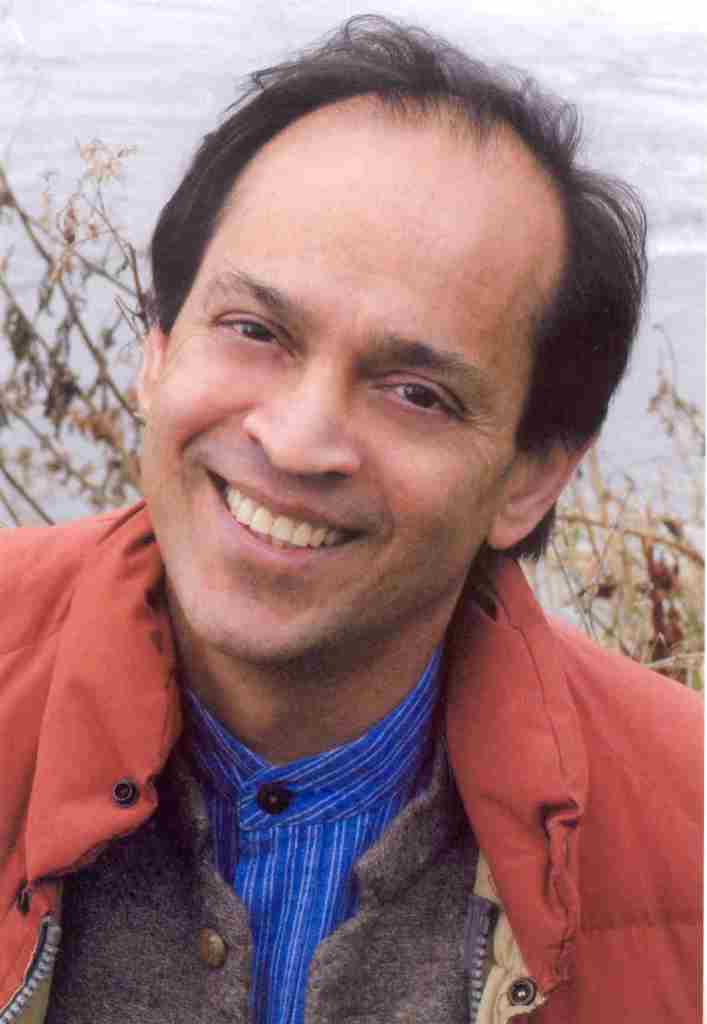
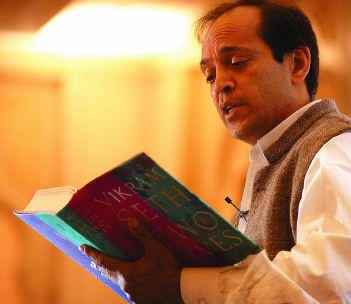

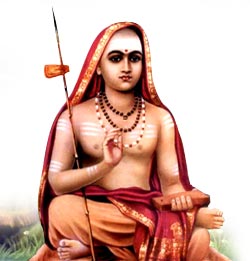 Adi Sankaracharya (788-821 CE) was a great saint & philosopher who consolidated the doctrine of Advaita Vedanta, a sub-school of Vedanta. His teachings are based on the unity of the soul and Brahman, in which Brahman is viewed as without attributes. He hailed from Kalady of present day Kerala. Sankara travelled across India and other parts of South Asia to propagate his philosophy through discourses and debates with other thinkers. He founded four mathas (monasteries), which helped in the historical development, revival and spread of Advaita Vedanta. Adi Sankara is believed to be the organizer of the Dasanami monastic order and the founder of the Shanmata tradition of worship.
Adi Sankaracharya (788-821 CE) was a great saint & philosopher who consolidated the doctrine of Advaita Vedanta, a sub-school of Vedanta. His teachings are based on the unity of the soul and Brahman, in which Brahman is viewed as without attributes. He hailed from Kalady of present day Kerala. Sankara travelled across India and other parts of South Asia to propagate his philosophy through discourses and debates with other thinkers. He founded four mathas (monasteries), which helped in the historical development, revival and spread of Advaita Vedanta. Adi Sankara is believed to be the organizer of the Dasanami monastic order and the founder of the Shanmata tradition of worship.
His works in Sanskrit concern themselves with establishing the doctrine of Advaita (Non-dualism). He also established the importance of monastic life as sanctioned in the Upanishads and Brahma Sutra, in a time when the Mimamsa school established strict ritualism and ridiculed monasticism. Sankara represented his works as elaborating on ideas found in the Upanishads, and he wrote copious commentaries on the Vedic Canon (Brahma Sutra, Principal Upanishads and Bhagavadgita) in support of his thesis. The main opponent in his work is the Mimamsa school of thought, though he also offers some arguments against the views of some other schools like Samkhya and certain schools of Buddhism that he was partly familiar with.
The Advaita philosophy of Sri Sankaracharya is lofty, sublime and unique. It is a system of bold philosophy and logical subtlety. It is highly interesting, inspiring and elevating. No other philosophy can stand before it in boldness, depth and subtle thinking. Sankara’s philosophy is complete and perfect.
Sri Sankara was a mighty, marvellous genius. He was a master of logic. He was a profound thinker of the first rank. He was a sage of the highest realisation. He was an Avatara of Lord Siva. His philosophy has brought solace, peace and illumination to countless persons in the East and the West. The Western thinkers bow their heads at the lotus-feet of Sri Sankara. His philosophy has soothed the sorrows and afflictions of the most forlorn persons, and brought hope, joy, wisdom, perfection, freedom and calmness to many. His system of philosophy commands the admiration of the whole world. Says he in ‘Bhajgovindam’:
The company of the good weans one away from false attachments; when attachment is lost, delusion ends; when delusion ends; the mind becomes unwavering and steady. An unwavering and steady mind is merited for Jeevan Mukti (liberation even in this life).
Don’t identify with wealth, relatives, your youth or your physical beauty – all those can be lost in a second. Knowing that all those are maya, may you realize Brahman.
One may have bathed in the holy Ganges or even in the Ganga Sagar; he may have performed many charities and observed many vows; yet unless one has understood the Brahman (Truth), he will not gain Moksha even after a hundred lives.
Who can disturb the peace and happiness of a man, if he has the true spirit of renunciation and has controlled his desires, even if he be the poorest, sleeping only in the temple halls or under trees or on the bare ground and just with a deer skin to cover.
 1. The five elements do no express my real nature; I am changeless and persist forever.
2. I am above castes and creeds. I am seen when ‘maya’ is removed, and do not need concentration or worship as shown in Yoga Sutras.
3. I have no parents, I need no Vedas as proclaimed in the scriptures, no sacrifices, no pilgrimages. I am the eternal witness.
1. The five elements do no express my real nature; I am changeless and persist forever.
2. I am above castes and creeds. I am seen when ‘maya’ is removed, and do not need concentration or worship as shown in Yoga Sutras.
3. I have no parents, I need no Vedas as proclaimed in the scriptures, no sacrifices, no pilgrimages. I am the eternal witness.


 Pandit Ravi Shankar is a living legend who is a genius Sitar player. Born on 7th April, 1920 in Banaras, his family was a Bengali Brahmin family who named him Ravindra Shankar. Shyam Shankar, his father, was a barrister. He had an elder brother Uday Shankar who was a famous Indian classical dancer. In his younger years, Ravi played Sitar the dance troupe of Uday Shankar, especially with Anna Pavlova. In 1938, he studied under his guru, Allaudin Khan.
Pandit Ravi Shankar is a living legend who is a genius Sitar player. Born on 7th April, 1920 in Banaras, his family was a Bengali Brahmin family who named him Ravindra Shankar. Shyam Shankar, his father, was a barrister. He had an elder brother Uday Shankar who was a famous Indian classical dancer. In his younger years, Ravi played Sitar the dance troupe of Uday Shankar, especially with Anna Pavlova. In 1938, he studied under his guru, Allaudin Khan.
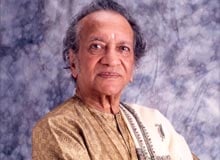 He took Indian classical music out of baithaks and soirees into the public arena' and made classical Indian sitar an international craze' with admirers including the likes of Yehudi Menuhin and the Beatles. As purists raised eyebrows' he experimented boldly' collaborated widely' but never made the journey from popular to populist'his roots in the sitar's classical traditions ran too deep.
He took Indian classical music out of baithaks and soirees into the public arena' and made classical Indian sitar an international craze' with admirers including the likes of Yehudi Menuhin and the Beatles. As purists raised eyebrows' he experimented boldly' collaborated widely' but never made the journey from popular to populist'his roots in the sitar's classical traditions ran too deep.
 For the next seven years he learnt the nuances of playing the sitar from Ustad Allauddin Khan. He also went to marry Ustad Allauddin Khan daughter, Anapurna in the year 1941. Pandit Ravi Shankar was able to establish his name as a performer and did his first concert in 1939. The following year he began appearing on programs in All India Radio. The most memorable of these were his jugalbandis with another upcoming artist, Ali Akbar Khan, who is today a maestro of the sarod. Over the next decade he would move across the country performing in a variety of programs and even working in theatre and films. By the 1950's he was keen to take his music abroad, for during his years in Paris he realized that the people there did not know much about Indian music. In 1952, he came into contact with Yehudi Menuhin, a Russian musician who expressed a sincere interest in Indian music. Encouraged by this, Pandit Jasraj toured the USSR in 1954 and two years later went on to tour Europe and America. In 1958 he visited Japan and then played in Paris as part of a UNESCO festival. During the fusion years of the 1960's he worked with several western musicians, one of his most famous such collaborations was with George Harisson (an ex-Beatle) in 1966. A collaboration with Yehudi Menuhin won them a grammy in 1967 and he followed that up with another Grammy in 1972 when he and George Harisson won a Grammy for best album. He also performed at the Woodstock Music Festival in 1969. Over the next few decades he would compose and perform music at various locations around the world. He is a regular performer in India and abroad, and has performed in almost all parts of the world. His performances not only made him a popular artist abroad, but also increased awareness of Indian classical music abroad and paved the way for other Indian musicians to perform abroad. For most of the 1970's he focused more on India, as he was worried that the tremendous international exposure was harming Indian music. He however returned actively to international work from the 1980's onwards. Pandit Ravi Shankar is a recipient of several awards like the Padma Vibhushan (one of India's highest civilian awards), the Grand Prize at the Fukuoka Asian Cultural Prizes, France's Commandeur de l'Ordre des Arts et des Lettres and eleven honorary doctorates. In his 80's now, he still performs and is based in California, USA. He has a daughter Anoushka (from his second wife Sukanya)and is busy training her in music. Although he is based abroad, he still makes it a point to regularly visit India.
For the next seven years he learnt the nuances of playing the sitar from Ustad Allauddin Khan. He also went to marry Ustad Allauddin Khan daughter, Anapurna in the year 1941. Pandit Ravi Shankar was able to establish his name as a performer and did his first concert in 1939. The following year he began appearing on programs in All India Radio. The most memorable of these were his jugalbandis with another upcoming artist, Ali Akbar Khan, who is today a maestro of the sarod. Over the next decade he would move across the country performing in a variety of programs and even working in theatre and films. By the 1950's he was keen to take his music abroad, for during his years in Paris he realized that the people there did not know much about Indian music. In 1952, he came into contact with Yehudi Menuhin, a Russian musician who expressed a sincere interest in Indian music. Encouraged by this, Pandit Jasraj toured the USSR in 1954 and two years later went on to tour Europe and America. In 1958 he visited Japan and then played in Paris as part of a UNESCO festival. During the fusion years of the 1960's he worked with several western musicians, one of his most famous such collaborations was with George Harisson (an ex-Beatle) in 1966. A collaboration with Yehudi Menuhin won them a grammy in 1967 and he followed that up with another Grammy in 1972 when he and George Harisson won a Grammy for best album. He also performed at the Woodstock Music Festival in 1969. Over the next few decades he would compose and perform music at various locations around the world. He is a regular performer in India and abroad, and has performed in almost all parts of the world. His performances not only made him a popular artist abroad, but also increased awareness of Indian classical music abroad and paved the way for other Indian musicians to perform abroad. For most of the 1970's he focused more on India, as he was worried that the tremendous international exposure was harming Indian music. He however returned actively to international work from the 1980's onwards. Pandit Ravi Shankar is a recipient of several awards like the Padma Vibhushan (one of India's highest civilian awards), the Grand Prize at the Fukuoka Asian Cultural Prizes, France's Commandeur de l'Ordre des Arts et des Lettres and eleven honorary doctorates. In his 80's now, he still performs and is based in California, USA. He has a daughter Anoushka (from his second wife Sukanya)and is busy training her in music. Although he is based abroad, he still makes it a point to regularly visit India.

